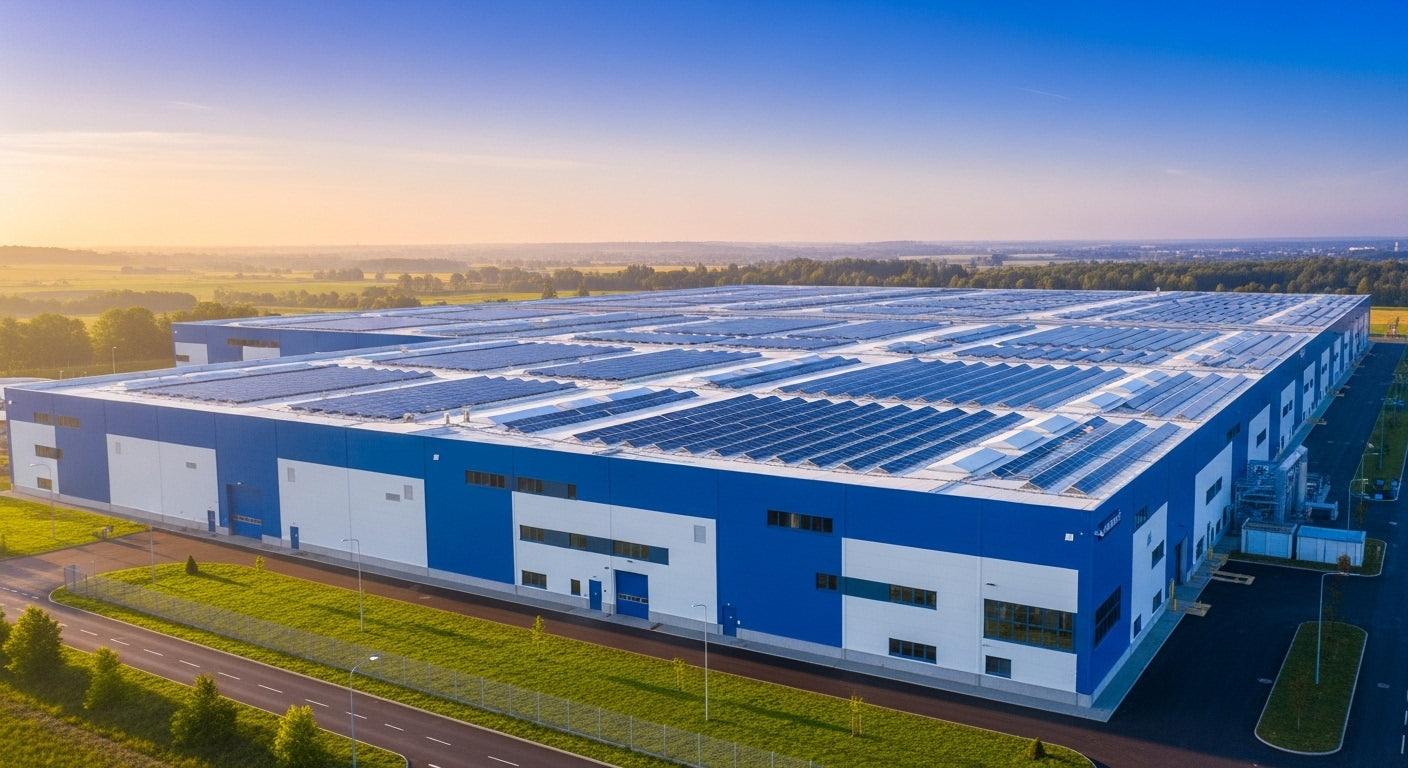
How a Querétaro Auto Supplier Cut its CFE Bill by 28%
For large industrial power users in Mexico, the CFE's GDMTH tariff isn't just a line item—it's a significant operational risk. High demand charges, grid instability, and rising costs can erode profitability. However, one Tier-1 automotive supplier in Querétaro turned this challenge into a competitive advantage by implementing an integrated energy strategy that is projected to save $884,100 USD annually.
This wasn't just about installing solar panels. It was a holistic approach that combined foundational efficiency upgrades with a strategic onsite solar-plus-storage system, delivering a blended payback of just 5.1 years.
The Challenge: High Costs, Unstable Power, and ESG Mandates
The plant, a large 24/6 manufacturing campus, faced a familiar set of problems:
-
Punishing Electricity Costs: Operating under the CFE's GDMTH (Gran Demanda Media Tensión Horaria) tariff, the facility's monthly peak demand charges were a significant and unpredictable part of its ~$3.1 million annual energy spend.
-
Operational Disruptions: Grid voltage sags caused micro-interruptions in sensitive equipment, impacting production uptime.
-
Corporate Pressure: A firm corporate mandate to reduce Scope 2 emissions required a measurable and impactful plan.
-
Aging Assets: Older, inefficient compressed air and chiller systems were becoming reliability liabilities.
The Strategy: A Two-Part Integrated Solution
Instead of tackling one issue at a time, the solution was designed as a stacked strategy: first, reduce baseline energy waste, then produce clean energy onsite to cover the newly optimized load.
Part 1: Foundational Efficiency ⚙️
Before investing in generation, the first step was to eliminate waste. Two key systems were targeted:
-
Compressed Air Optimization: A classic "low-hanging fruit" in manufacturing. An audit revealed significant leaks and inefficiencies. Replacing an old fixed-speed compressor with a modern VSD (Variable Speed Drive) unit and optimizing system pressure delivered $97,500 in annual savings with a rapid two-year payback.
-
Chiller and HVAC Upgrade: An aging 400-ton chiller was replaced with a high-efficiency magnetic bearing model, and VFDs were added to pumps and fans. This single project is projected to cut energy use by 820,000 kWh annually, saving $123,000 per year.
These efficiency measures alone dropped the plant's energy demand and provided a fast, high-return investment, creating a more efficient baseline to power.
Part 2: Strategic Onsite Power and Storage ☀️🔋
With the plant's energy consumption optimized, the game-changing investment was deployed: an onsite solar-plus-storage system.
-
Solar PV System: A 1.5 MW rooftop solar array was installed to generate clean, low-cost energy directly where it's consumed, offsetting over 2.4 million kWh from the grid annually.
-
Battery Energy Storage System (BESS): The key to mastering the GDMTH tariff. A 1 MW / 2 MWh battery system was integrated.
The BESS use case is simple but powerful: Peak Shaving—the battery charges during the day with low-cost solar energy. During the CFE's high-cost evening "punta" period (e.g., 7 PM -10 PM), the battery discharges at 1 MW, effectively capping the facility's demand from the grid. This directly attacks the most expensive component of the CFE bill—the demand charge—slashing it by a projected 1,000 kW every month.
The Results: A Financial and Environmental Win
By stacking these projects, the financial and operational outcomes are compelling.
| Project Component | Capex (USD) | Annual Savings (USD) | Payback (Yrs) | IRR (%) | CO₂e Reduction (t/yr) |
| Compressed Air Optimization | $220,000 | $97,500 | 2.3 | 42.1% | 298 |
| Chiller Plant & HVAC Upgrade | $580,000 | $123,000 | 4.7 | 20.3% | 376 |
| Onsite Solar PV + BESS | $3,750,000 | $663,600 | 5.6 | 16.8% | 2,511 |
| Total / Blended Project | $4,550,000 | $884,100 | 5.1 | 18.5% | 3,185 |
The integrated project delivers a strong 18.5% IRR and reduces the plant's carbon footprint by over 3,185 metric tons of CO₂e per year, helping to meet corporate ESG targets decisively.
What This Means For Your Plant
This case study provides a clear, actionable blueprint for other industrial facilities in Mexico.
-
For Plant Managers: Start by benchmarking your "big 3" energy users: compressed air, HVAC/chillers, and process heating. An ASHRAE Level 2 audit can quickly identify 10%-15% savings.
-
For CFOs: Peak shaving with a BESS is a financial tool. Model the impact of cutting your monthly peak demand by 500 kW -1000 kW. The return on investment often rivals traditional machinery upgrades.
-
For Operations Directors: Your rooftop is an underutilized asset. A structural assessment is the first step toward turning that space into a power-generating, cost-saving machine.
The era of passively accepting high electricity costs is over. A proactive, integrated energy strategy not only cuts costs but also improves resilience and achieves critical sustainability goals.
Need a quantified roadmap? MEP can deliver a benchmark and a 10-day savings plan for your plant.

